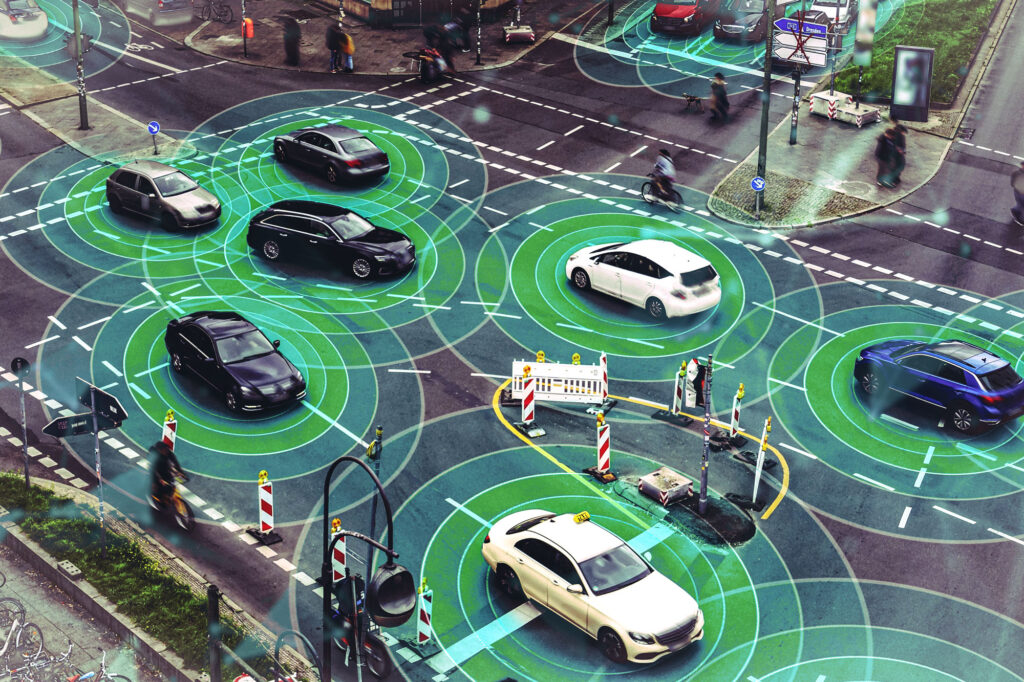
A recent study led by researchers at the Massachusetts Institute of Technology (MIT) reveals that implementing eco-driving measures could significantly reduce carbon dioxide emissions from vehicles at intersections across major U.S. cities. These measures focus on dynamically adjusting vehicle speeds to minimize unnecessary idling and acceleration, which currently contributes up to 15 percent of emissions from land transportation.
The research team, utilizing advanced artificial intelligence techniques, conducted a comprehensive analysis in three cities—Atlanta, San Francisco, and Los Angeles. The findings show that fully adopting eco-driving strategies could decrease annual intersection carbon emissions by 11 to 22 percent without compromising traffic flow or safety.
According to the study, even if just 10 percent of vehicles on the road implemented eco-driving, it could lead to a reduction of 25 to 50 percent in overall emissions. The researchers also noted that optimizing speed limits at approximately 20 percent of intersections could yield around 70 percent of the total emissions benefits. This suggests a scalable approach to adopting eco-driving measures, which could meaningfully contribute to tackling climate change and enhancing public health.
Significant Findings from a Multi-Year Study
The research, published in Transportation Research Part C: Emerging Technologies, involved a multi-part modeling study spanning four years. The team identified 33 factors influencing vehicle emissions, such as temperature, road grade, and traffic signal timing. They created digital models of over 6,000 signalized intersections and simulated more than a million traffic scenarios to determine the potential impact of eco-driving.
Senior author Cathy Wu, an associate professor in Civil and Environmental Engineering at MIT, emphasized the importance of this research in understanding the broader implications of eco-driving. “Most prior work has focused on how to implement eco-driving. We shifted the frame to consider if we should implement it,” Wu explained.
The researchers employed a method known as deep reinforcement learning, which optimizes driving behavior through trial-and-error interactions with a high-fidelity traffic simulator. This method rewards energy-efficient driving while penalizing less efficient behaviors. Despite the challenges of generalizing vehicle behaviors across diverse traffic scenarios, the research team successfully identified clusters of similar traffic situations to optimize emissions reductions more effectively.
Implications for Urban Transportation
The findings indicate that eco-driving could provide substantial emissions benefits, varying by city layout. For instance, San Francisco, with its dense infrastructure, has less capacity for implementing eco-driving measures compared to Atlanta, which may realize greater emissions reductions due to its higher speed limits.
Even with just 10 percent of vehicles adopting eco-driving, cities could experience significant emission reductions due to car-following dynamics. Non-eco-driving vehicles would naturally follow the optimized speed of eco-driving vehicles, leading to lower overall emissions.
While the analysis suggests eco-driving could enhance vehicle throughput, Wu raised concerns that this might also encourage more drivers to take to the roads, potentially undermining some of the emissions benefits. Additionally, although the study indicates eco-driving is as safe as human driving, it may lead to unexpected behaviors among human drivers, warranting further investigation.
The researchers concluded that eco-driving could yield even greater benefits when combined with other transportation decarbonization solutions. For example, a 20 percent adoption rate of eco-driving in San Francisco could reduce emissions by 7 percent, but when paired with hybrid and electric vehicles, total emissions could drop by 17 percent.
“This is a first attempt to systematically quantify the network-wide environmental benefits of eco-driving. This effort will serve as a key reference for future assessments of eco-driving systems,” said Hesham Rakha, a professor of engineering at Virginia Tech, who was not involved in the study.
As cities increasingly look for practical solutions to combat climate change, eco-driving presents a promising avenue that leverages existing technology and infrastructure. Wu noted that this approach is almost a “free intervention,” given the rapid adoption of smartphones and advanced vehicle automation features. The study highlights the potential for eco-driving to scale quickly, making it a viable option for urban transportation systems around the world.







